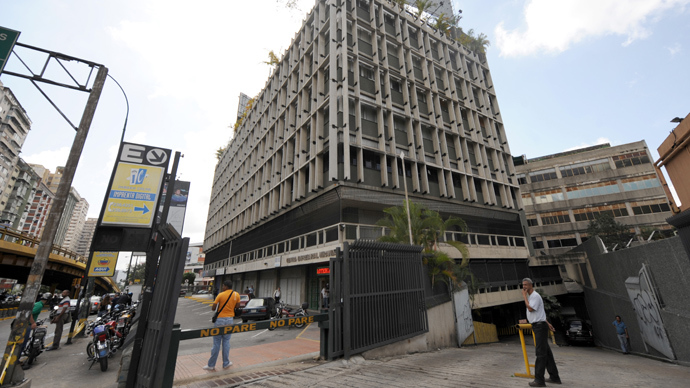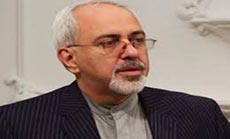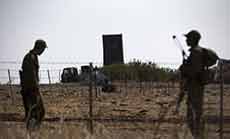Eye on the Enemy: "Israel" Worried of Iranain Missiles, Sharp Increase in Operations against "Israel"

Shin Bet's monthly report: A Sharp Increase in operations against "Israel"
Where is Iran's Sajil missile?
Revolutionary Guards Deputy Commander Hossein Salami was quoted Tuesday as saying that the missile tests were in response to Iran's enemies who talk of a "military option being on the table."
This step might be an indication that Saudi Arabia has assessed that the harm to the strait's freedom of navigation is higher than in the past, and that it must try to prevent market shortages. Another pipeline that bypasses the Strait of Hormuz and runs through the United Arab Emirates could begin pumping oil as early as this month. At an early stage, the pipeline could transfer 1.7 million barrels per day outside the gulf. In addition, for the first time, Saudi Arabia's national oil company, Saudi Aramco, announced that it was seeking to produce oil and gas from the area of the Red Sea.
Shabak.gov.il
June witnessed a sharp increase in the number of operations: 165 operations while 81 operations were executed in May. Moreover, two rocket launchings from Sinai towards "Israel" took place on 16 June. Mainly, the operations executed from Gaza have increased: 99 operations in June, while only 10 operations in May. That was in the framework of the last escalation round that took place, during which 197 artillery shells were shot at "Israel" and 21 Hawn shells.
West bank and al-Quds [Jerusalem] witnessed a slight decrease in the number of operations. In the West Bank, number of operations scheduled in May is 48, while in June 50. In al-Quds [Jerusalem], there were 18 operations in May, and 21 in June.
During the "terrorist" operations of this month, 2 "Israelis" were killed and 7 others were wounded. Deaths: a security forces' agent died of fire shooting on the borders of Gaza strip (June 1), and a civilian was killed at a mixed operation (bomb, fire shooting, anti-tank missile) on the "Israeli"-Egyptian border (June 18).
All those injured are from security forces, 4 of them are Jews: 1 got stabbed (June 4), 1 was hit by scorching bottles and stones (June 9), 2 were hit by scorching bottles (June 18). Another 3 were injured because of launching artillery bombs from Gaza Strip to "Israel".
In the strip 99 operations were executed: 83 launches of artillery bombs, 11 launches of Hawn bombs, 3 fire shootings from light weaponry, 1 loaded explosive, and 1 mixed operation (anti-tank missile, loaded explosive, and fire shooting from light guns).
In west bank and al-Quds [Jerusalem]: 66 operations were executed: 1 fire shooting from light guns, 3 bombs shelling, 1 loaded explosive, 1 stabbing incident, 60 incidents of throwing scorching bottles (18 in Al-Quds (Jerusalem)).
From Sinai: 2 artillery bombs fired to "Israel".
In June 2012, 197 artillery bombs were shelled at "Israel" and 21 Hawn bombs (in 94 operations), while 4 artillery bombs and 2 Hawn bombs were fired in May (in 6 operations).
-------------------------------------------------------------------------------------------------
JP- By Yaakov Katz
Iran's missile tests display old systems, raising questions about fate of the regime's most-impressive missile.
Iran's missile maneuvers on Tuesday were closely followed in "Israel", although not because of what was tested, but rather due to what was missing.
Held as Western powers gathered in Istanbul for another round of talks with Iran
over its nuclear program, the Great Prophet 7 exercise featured the launching of a Shahab 3 ballistic missile which is capable of reaching "Israel", with a range of 1,300 kilometers. The shorter-range Shahab 1 and 2 were also tested.
Missing from the drill was Iran's Sajil ballistic missile, which was last tested in 2009.
A two-stage missile, the Sajil was promoted as Iran's most sophisticated missile system when it was first unveiled in 2008.
The Sajil's use of solid fuel propellant also marked an impressive accomplishment for Iran in its efforts to improve the accuracy and range of its ballistic missiles.
"Its absence could mean a number of things, including the possibility that the
Iranians have run into problems with the development of the Sajil and therefore decided to nix the program," one "Israeli" missile expert said on Tuesday.
"It is possible that the Iranians have decided to instead focus their efforts on more advanced systems like intercontinental ballistic missiles."
Yiftah Shapir, a missile expert from the Institute for National Security Studies in Tel Aviv, said the absence of the Sajil could be an indication that it is not yet operational, or that the Iranians prefer to retain the limited number they may have for a real conflict.
"They wouldn't want to waste their best systems in an exercise," he said.
In February, Vice Prime Minister Moshe Ya'alon said that Iran was working on developing an ICBM with a range of 10,000 km. that would put the United States in reach of a potential attack.
"The main aim of this drill is to demonstrate the Iranian nation's political resolve to defend vital values and national interests," Salami said.
The Fars news agency said dozens of missiles had been aimed at simulated air bases, and that Iranian-built unmanned drones would be tested on Wednesday. Iran has previously threatened to block the Strait of Hormuz in response to increasingly harsh sanctions imposed by the United States and its allies.
-------------------------------------------------------------------------------------------------
Lowering the Price of Oil
"Israel"defense- By Yoel Guzansky
Western sanctions aren't the only efforts being made against Iran - Saudi Arabia is upping its efforts to combat an increase in global oil prices
Saudi Arabia, the world's largest oil producer and holder of the largest oil reserves, is readying itself and acting in a more overt manner against Iran than in the past.
In light of the harsher sanctions imposed against Iran, the Saudi royal family is trying to minimize damages caused to the global economy. In particular, they are trying to reduce the implications of a possible Iranian response, should Iran try to harm oil exports by blocking off the Strait of Hormuz.
With 80% of its export earnings coming from oil, Iran expected that the sanctions imposed on it would result in an increase in oil prices. However, oil is now at a new low: from $125 per barrel in March to just above $80 as of July. This is due in part to a certain decline in demand (a result of the global recession), but primarily due to an increase in output from Saudi Arabia, Kuwait, and the United Arab Emirates - the largest oil exporters in the Gulf.
Saudi Arabia is increasing its output due Iran, Iraq, and Venezuela's refusal to increase OPEC's output quota. The kingdom's actions reduced the fear of price increases, and contributed to the pricing level that allowed the European embargo to enter into effect. The sanctions have hurt Iran's oil exports so much that Iran has already lost some substantial revenues from the decrease in export of 2.5 million barrels per day to only 1.5 million barrels per day.
On the other hand, Saudi Arabia's oil production is at a thirty-year record with more than 10 million barrels per day. For the short term, this increases pressure on Iran and reduces the potential harm to Western economies. This will be especially true if oil prices increase now that the European oil embargo has entered into effect. Saudi Arabia is the only country whose production is in a state of considerable swing capacity, which currently stands at 2.5 million barrels per day - a capacity that surpasses Iran's total oil exports.
In addition to increasing oil production rates, Saudi Arabia is also simultaneously working to fix old oil pipelines passing through its territory so that greater oil quotas can bypass the Straits of Hormuz and be transported to terminals in the Red Sea. Saudi Arabia has also secretly fixed the Iraqi IPSA pipeline passing through its territory, which hasn't been used since Saddam Hussein invaded Kuwait in August, 1990. Saudi Arabia confiscated the pipeline in 2001, which can transfer at least 1.7 million barrels per day.
Given its dependence on oil revenues, inflicting damage to Iran's faltering energy industry may not only change its policy, but could even threaten the stability of the regime. However, the ability to establish a "critical mass," which would bring Iran to change its policies on the issue of its nuclear project, also depends on the ability to rally key countries like China, India, and Japan into the circle of countries sanctioning Iran (the US granted temporary exemptions to these countries after they decreased imports of Iranian oil).
The problem is that oil may be the last significant non-military lever that can be used to pressure Iran.
Source: Hebrew papers, Translated and Edited by moqawama.org




